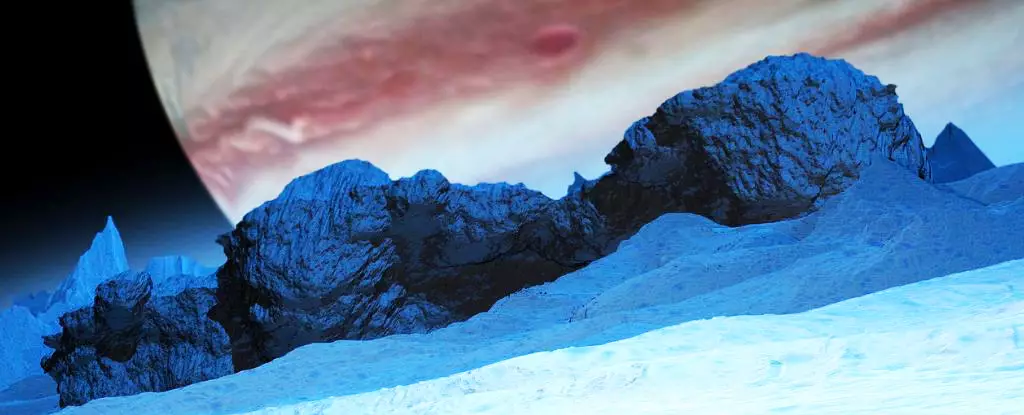

The recent findings from the Juno mission to Jupiter have provided a closer look at Europa’s icy surface and its atmosphere. The study published in Nature Astronomy reveals some unexpected results regarding the production of oxygen on the moon.
Europa has long been considered one of the most promising candidates for hosting microbial life in our Solar System. The presence of an ocean beneath its icy surface, rich in water and essential chemical elements, along with a source of heat from Jupiter’s tidal forces, make it an intriguing target for astrobiologists.
While Europa remains a top contender for potential life, other moons in our solar system also spark curiosity. Mars, with its history of possible habitability and upcoming rover mission, remains a key focus. Saturn’s moon Enceladus and Titan also offer unique environments that could harbor life, with their subsurface oceans and organic compounds.
The Juno mission’s advanced charged particle instruments have provided valuable insights into Europa’s atmosphere. By measuring the energy, direction, and composition of charged particles, researchers can uncover the dynamics of ion pickup processes and atmospheric interactions.
The recent measurements from Juno indicate a lower-than-expected production of oxygen on Europa’s surface. The amount of oxygen being released into the atmosphere is significantly less than previous estimates, suggesting minimal erosion of the icy surface.
The reduced rate of oxygen production raises questions about Europa’s potential to support life. While some oxygen may reach the subsurface ocean, nourishing any potential organisms, the overall loss of oxygen from the moon’s atmosphere may limit its habitability.
Further studies are needed to understand the variability in oxygen production and loss on Europa. Factors such as the eruption of water plumes, orbital position, and external conditions can influence the rate of oxygen exchange on the moon. Continued exploration and monitoring will provide valuable insights into Europa’s potential for hosting life.
While Europa’s icy surface and subsurface ocean hold promise for microbial life, the new findings from the Juno mission suggest that the moon’s atmosphere may not be as hospitable as previously thought. The intricate balance of oxygen production and loss on Europa raises important questions about its habitability and underscores the need for continued research and exploration in the search for extraterrestrial life.
In an era where environmental consciousness is paramount, the maritime industry has long been scrutinized…
Radionuclides, often relegated to discussions surrounding nuclear energy and radioactive waste, have far-ranging implications for…
Landslides have long been a concern in areas like California, where the unique geography and…
In the vastness of our galaxy, among countless stars, lies a fascinating phenomenon known as…
This week marks a monumental milestone in astronomy as the Hubble Space Telescope celebrates its…
The enigma of dark matter has captivated the scientific community for decades. Although it constitutes…
This website uses cookies.